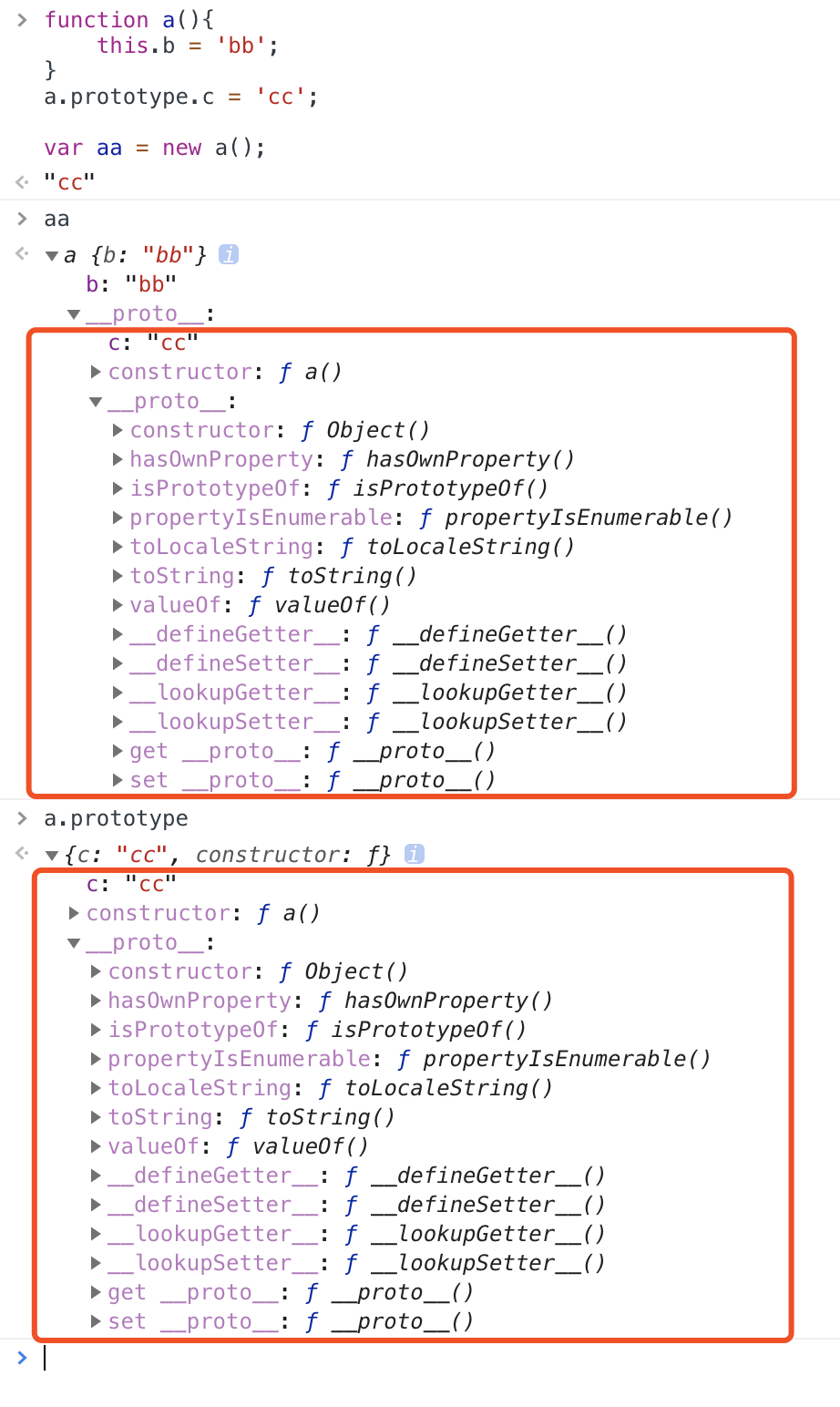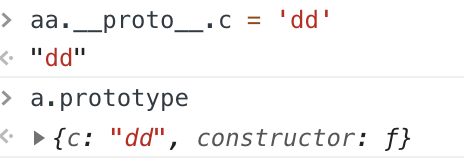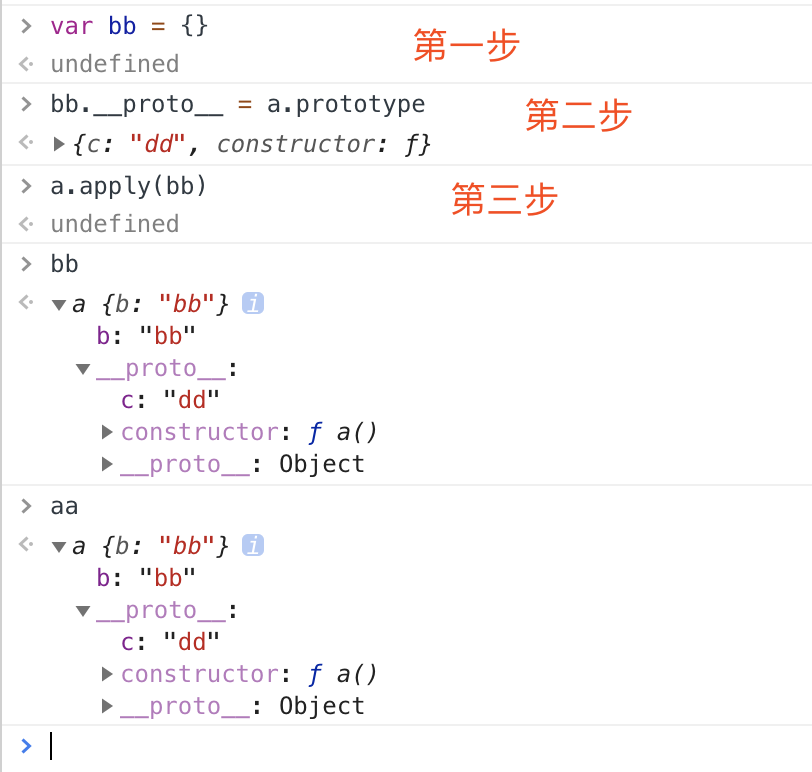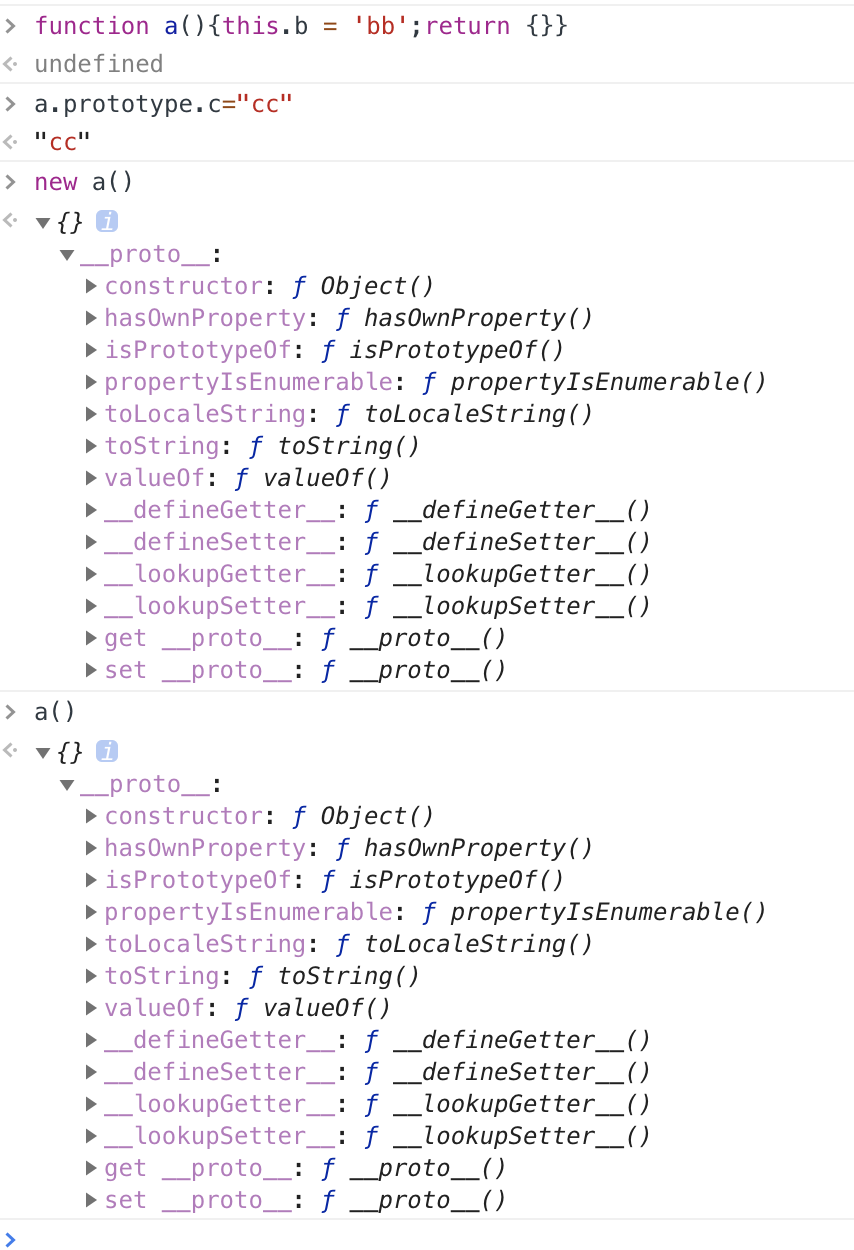javascript new 的原理
昨晚看了一篇模擬實現 js new 的文章,今天覆盤一下
function a(){
this.b = 'bb';
}
a.prototype.c = 'cc';
var aa = new a();new 其實做了三件事情,首先它肯定是建立了一個物件
2.將 a 的prototype屬性物件通過引用傳遞賦值給 aa.__proto__ ,相當於:aa.__proto__ = a.prototype

進一步證實一下:

第三件事:用物件 aa 呼叫函式 a,從而使 a 內部的 this 指向 aa,即:
a.apply(aa)
這樣 aa 就有了屬性 b

這樣我們就用上面的三步“生產”出了一個和 new 效果一樣的物件 bb;
以上就是 new 的基本原理了,但還有一些小細節 :
1. 函式a 如果有引數
2. 函式 a 如果有返回值
1 : 比較簡單,修改第三步為 a.apply(bb , [arg1, arg2, ...]) 就可以了
2 : 分兩種情況:
a.返回值型別為基本型別: string number null undefined boolean symbol
b.返回值為物件 即,typeof 等於 'object' 或 'function' ,這裡麵包含了 Array、Date、RegExp、Error 等。。。
情況 a 是我們上面講的普通情況,
但是當我們 new 一個返回值為物件的函式時,js 不會執行上面的那些操作,而是執行函式並返回函式的發回值 即:
new a(); 和 a(); 的效果是一樣的:
所以如果要自己模擬一個 new 函式可以這樣寫:
function newOperator(ctor){ if(typeof ctor !== 'function'){ throw 'newOperator function the first param must be a function'; } //es6 new.target 指向建構函式(這個沒有細究) newOperator.target = ctor; //這裡可以通過 Object.create 將第一二步合成一步 var newObj = Object.create(ctor.prototype); var argsArr = [].slice.call(arguments); argsArr.shift(); var ctorReturnResult = ctor.apply(newObj, argsArr); if(typeof ctorReturnResult === 'object' && ctorReturnResult !== null){ return ctorReturnResult; } if(typeof ctorReturnResult === 'function'){ return ctorReturnResult; } return newObj; }
當然 js 也賦予了 prototype __proto__ 這些特殊屬性一些特殊作用,
比如 可以用 aa.c 來訪問 aa.__proto__.c 前提是 aa 沒有 c 這個自有屬性,並且不能通過 aa.c 來修改 aa.__proto__.c 即:
aa.c = 'ss' 是不能改變 aa.__proto__.c 的值
__________________________________________________________
所以,清楚了 __proto__ 是一個物件引用,並且瞭解了它的特殊作用 js 的原型鏈 面向物件 也就明白八成了吧~~!

